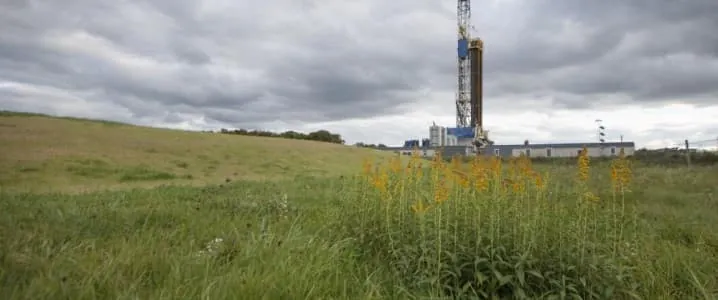
Natural Gas: The Fuel of the Future Amid Political Shifts
2024-11-28
Author: Wei
Natural Gas: The Fuel of the Future Amid Political Shifts
As the U.S. braces for the next four years, energy analysts are buzzing about the implications of a potential second Trump presidency on the energy sector, particularly focusing on natural gas. A recent report from Wood Mackenzie outlines alarming forecasts: if Trump returns to the White House, investments in renewable energy might falter, carbon emissions could spike by 1 billion tonnes by 2050, and peak demand for fossil fuels could be pushed back by a decade.
This speculation aligns with insights from commodity analysts at Standard Chartered. They highlighted Scott Bessent's recent nomination as Treasury Secretary, emphasizing his views during a June conference. Bessent suggested tapping into the late Shinzo Abe's economic strategy, aiming for 3% economic growth and increasing U.S. energy production by 3 million barrels of oil equivalent per day. However, the conversation around oil production has sparked some confusion, with many misinterpreting Bessent's suggestions for crude oil to mean an increase in overall energy production, which includes natural gas.
To put things in perspective, U.S. oil and gas output currently stands at approximately 40.7 million barrels of oil equivalent per day (mboe/d), and since 2015, production has consistently increased at a rate of 123 thousand barrels of oil equivalent per day. It's estimated that achieving the added 3 mboe/d by 2028 is entirely feasible, primarily driven by natural gas, which accounts for 41% of the post-2015 output increase.
In light of these developments, experts at Morgan Stanley predict that the U.S. natural gas market is on the brink of a significant demand growth cycle, fueled by rising liquefied natural gas (LNG) exports and increasing electricity requirements. The onset of the Fourth Industrial Revolution is believed to redefine energy consumption patterns, with projections now estimating a 15% surge in electricity demand over the next decade. The growth is largely attributed to advancements in artificial intelligence, clean energy manufacturing, and the booming cryptocurrency market.
On the oil front, Standard Chartered noted that OPEC+ is teetering on a decision regarding output adjustments, which will play a critical role in influencing oil prices in the near to mid-term. The fear of an oversaturated market has raised questions among traders about the balance between renewed OPEC+ production and non-OPEC supply growth, but recent assurances from OPEC+ members hint that any increase in output will be finely tuned to real-time market conditions rather than adhere to rigid schedules.
Even more intriguing is OPEC’s recent announcement to postpone output increases until late 2025, suggesting a strategic approach to bolster market stability. Despite traders’ apprehensions about how many barrels could be restored before oversupply occurs, OPEC’s delay indicates a mindful awareness of market dynamics.
As we move forward, it’s evident that natural gas is poised to play a pivotal role in the U.S. energy landscape, shaping not just market trends but also the broader economic and environmental narrative in the coming years. Stay updated—subscribe to our newsletter for more on natural gas trends, OPEC’s maneuvers, and how political shifts are influencing global energy strategies!




 Brasil (PT)
Brasil (PT)
 Canada (EN)
Canada (EN)
 Chile (ES)
Chile (ES)
 España (ES)
España (ES)
 France (FR)
France (FR)
 Hong Kong (EN)
Hong Kong (EN)
 Italia (IT)
Italia (IT)
 日本 (JA)
日本 (JA)
 Magyarország (HU)
Magyarország (HU)
 Norge (NO)
Norge (NO)
 Polska (PL)
Polska (PL)
 Schweiz (DE)
Schweiz (DE)
 Singapore (EN)
Singapore (EN)
 Sverige (SV)
Sverige (SV)
 Suomi (FI)
Suomi (FI)
 Türkiye (TR)
Türkiye (TR)